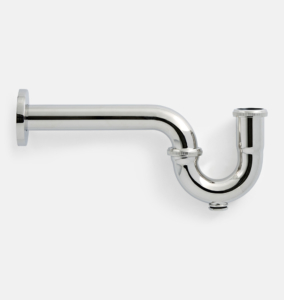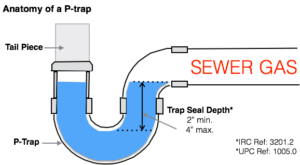What is the foul odor in the unused bathroom?
By Robert Davis 1/20/2020
Have you noticed a foul odor in an unused bath room in your home? This could be coming from your bathroom sink. The drain plumbing under your sink not only carries waste water away, but it also prevents harmful sewer gases from entering your home.
This is a P TRAP

Many believe this is designed to catch valuable items that may fall down your sink drain, like your wedding ring. However, the P Trap serves another very valuable purpose. Here is how it works. When you turn on the water to your sink, the wastewater flows through the drain and out to either your septic tank or to the public sewer line. This will continue until the water is turned off. The P Trap is designed to hold a “Trap” of water that will act as a plug, preventing sewer gas from entering your home. Your drain lines are a direct access to the sewage system. Without the water constantly in the P Trap, sewer gas would vent directly into your home. All of the drains in your home must have some type of water trap. Your toilet holds water in the toilet bowl, your bathtub has a P Trap in the floor under the tub, your washing machine drain has a p trap in the wall behind the machine, and all of your sinks will have a p trap directly under the sink.
If a sink, or shower, or any other drain in your home has not had water flowing through it in a while, the water in the P Trap may evaporate out. Once the water evaporates out, there is nothing stopping sewer gas from entering your home. We at Hometown Inspections always recommend that you flow water for a couple of minutes in all unused plumbing at least once every six months. This will keep water in your P Traps and ensure that you never have harmful sewer gas in your home.





Leave a Reply
Want to join the discussion?Feel free to contribute!